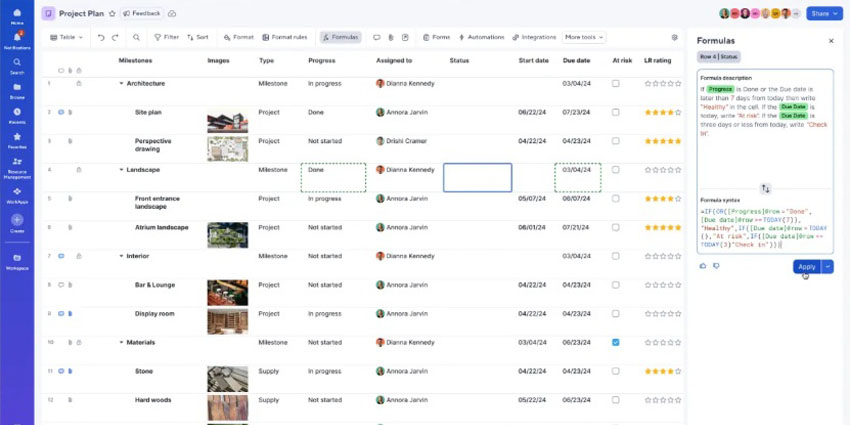As organizations of all sizes continue to figure out their hybrid working strategy, they are constantly being reminded that there is no one size fits all approach when it comes to how people want to work.
One key area where organizations are facing challenges is in building out their unified communications plan
Speak to the IT department of any organization, especially the bigger ones as you lead up to enterprise, and they will give you an earful about how every department has their communication platform of choice.
Maybe the C-suite prefers Cisco products like Webex, marketing is on Zoom, R&D is all in on Slack and Operations runs on Teams being heavily reliant on Microsoft. The list goes on…
And those are the platforms that IT knows about.
No matter the constellation, IT is still responsible for making sure that everyone has a UC tool that allows them to get their work done with as little disruption as possible, keeping employees happy and efficiency up.
Oh, and those employees need to be able to collaborate with each other, regardless of which platform they are on.
Afterall, collaboration doesn’t work well in a silo.
In hopes of understanding how organizations are handling this challenge, UC Today caught up with the team at CallTower, asking how they are working with customers and partners to provide everyone with the functionalities they need to operate successfully while saving on costs.
Mix, Mash, Mesh
Speaking with Andy Ramos, CallTower’s VP of Global Channel Sales, he says that in starting conversations with their clients, they usually discover a mish mash of different vendors’ products are already present throughout the organization.
“When we start our discovery process, it’s pretty common to find a bit of Microsoft, Cisco, some Zoom, and then of course other solutions for additional features like CRM and Contact Center,” he says.
“What we do is work to figure out which tools are the right fit for each department and use case,” he explains, adding that, “The focus needs to be on finding the right solutions, and that often means pulling in different offerings from different vendors while still making the management easy for the IT team.”
For CallTower, offering those solutions has recently gotten a whole easier. Having announced a merger with OneStream back in March, they significantly expanded their available solutions to include not only an extensive international network of telephony capabilities that brings them to 175 countries and 8,000 cities across the globe, but also a wider range of Cisco, Zoom and other products as well.
The impact for the organization extends beyond the value for the departments themselves and onto the IT crew as well with the CT Connect portal that allows for easy provisioning and management.
“We can get down to the user level, and connect independent platforms on a common plane,” says Ramos, explaining that CallTower can enable a Microsoft platform user to collaborate with a Cisco platform user on the same network.
“This helps to reduce the friction, and allows team members to simply collaborate with each other,” says CallTower’s Chief Revenue Officer William Rubio.
“We want our customers to have the seamless experience of communicating and not let the tools get in the way of collaboration.”
Benefits for Partners
Ramos notes that there is added benefit from the expanded offering for their channel partners, including Value-Added Resellers and other consultative services like master agents.
CallTower, as well as OneStream before the acquisition, were able to fill that critical role in working with partners to provide the telephony networks that they needed to make a comprehensive product offering to customers.
This telephony was important for filling in critical gaps that Microsoft and Cisco, among others offering digital voice and collaboration, lacked.
Now with a full stable of Microsoft, Cisco, Zoom, and many other solutions under one roof, they can work with partners to give them as many or as few capabilities they need. This can come as a full package of digital UCaaS, CCaaS, and telephony options, or they can go a la carte as needed.
The Future is Flexible
Continuing the transition towards hybrid working is going to be highly dependent on providing the flexibility that both organization and employees need.
It’s all about understanding the incentives, and there are plenty of them.
For the organizations, there are substantial cost savings that can come from switching over to the cloud. Take the example of being able to spin accounts up and down based on actual employee use. No more simply paying for a constant number of on-prem lines sounds great. It will also allow for budgeting and provisioning on a regional level instead of per location.
Having tasted the goodness that is remote work, employees expect that their organization will accommodate them with the collaborative solutions that they have grown accustomed to, or know they can find at another employer.
Not every organization is going to move at the same pace. Planning out your transition to meet your needs and capacity is critical, so working with a solutions provider that can move at your pace is a must.
Most importantly though is breaking the mode of thinking that one vendor has everything you need and your workforce should adjust to it. Instead, moving forward, think about how you create a collaboration constellation that enables communication and reduces consternation.







